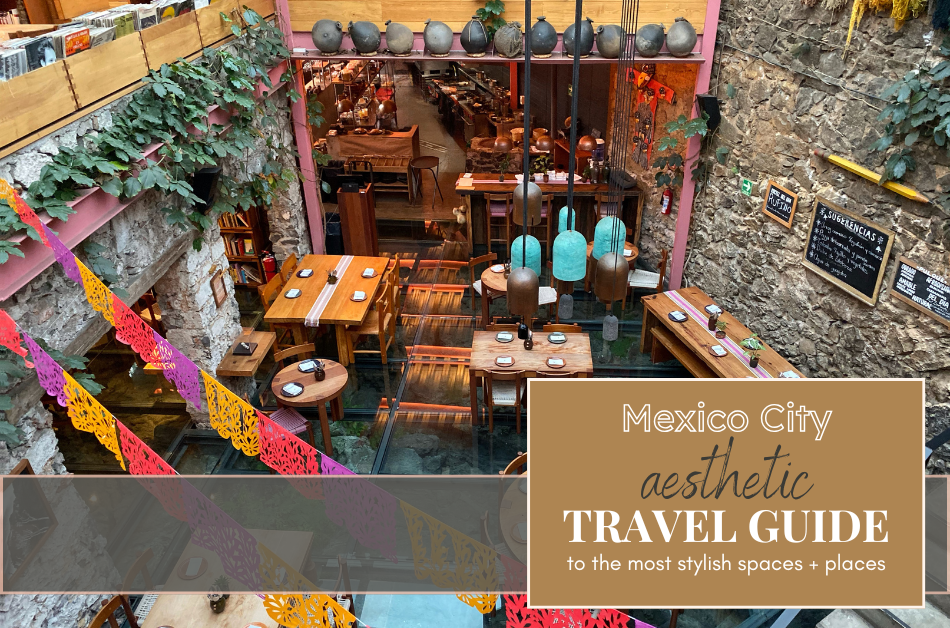Mexico City is having a moment. Which means it’s also dangerously easy to waste it. One wrong turn and you’re eating soggy guac next to a gift shop selling sombreros. No bueno. This Mexico City Aesthetic Travel Guide will save you from that sad fate!
This guide was made for the aesthetic traveler. The one who books restaurants before flights. Who wants mezcal with a view, a suite that makes you swoon, and shops so good you reconfigure your suitcase. (Been there.)
Hi, I’m Sarah. I’m a hotel, bar, and restaurant designer by day…and an aesthetic traveler always. I have high standards for the places I spend my time and money. But I also believe in ordering the cocktail, lingering a little longer, and choosing the place that makes you feel something. Mexico City is full of those moments… if you know where to look.

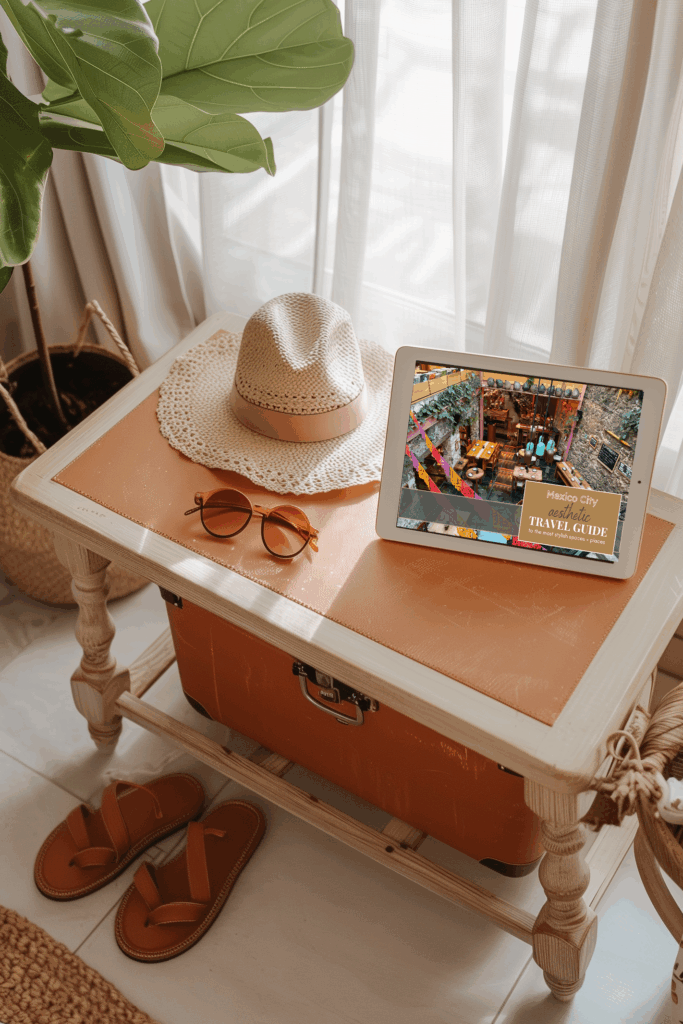
Download your Mexico City Aesthetic Travel Guide Here:
So if you’re the kind of person who travels for the vibe, cares deeply about where you’re having that cocktail, and maybe wants to style your home as beautifully as your favorite hotel lobby—welcome. This guide’s for you.
I made this so you don’t have to waste a single meal, moment, or mezcal flight. You’re welcome.
Vámonos!
Restaurant | Address: Eje Central Lázaro Cárdenas 42, Centro Histórico de la Cdad. de México, Centro, Cuauhtémoc, 06000 Ciudad de México, CDMX, Mexico
El Moro Churrería Restaurant: Sugar Rush Meets Design Crush

No trip to Mexico is complete without eating at least one churro, right? El Moro Churrería is graphic, gutsy, and ridiculously photogenic. The walls are tiled like a graphic design student’s final project (the one that actually got an A), and the packaging is so good you’ll consider framing it. Spoiler: the churros live up to the aesthetic.
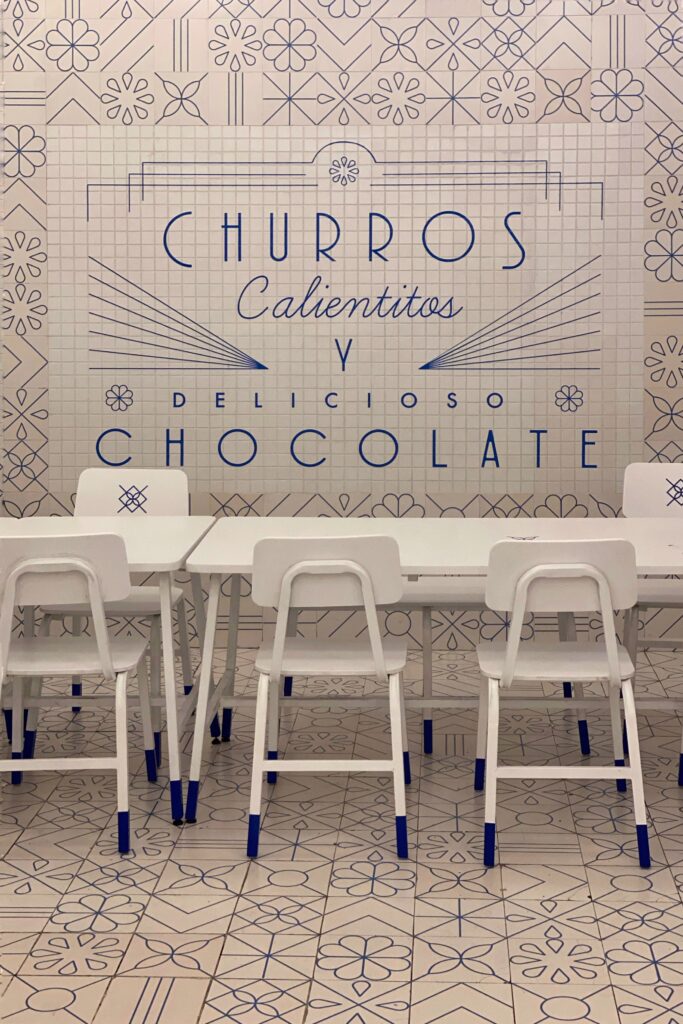

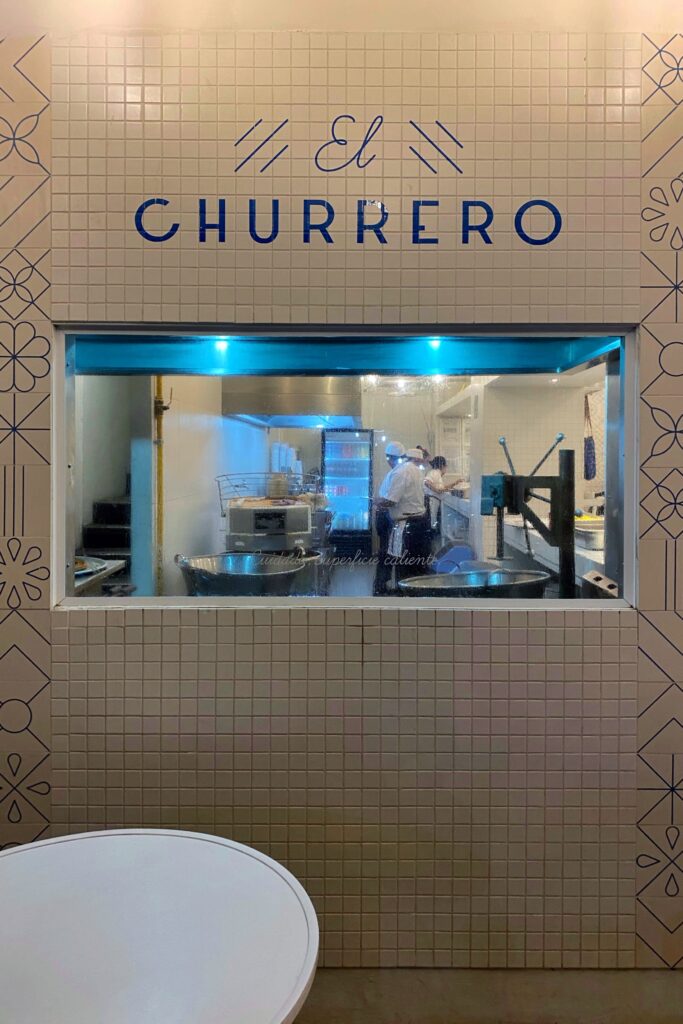
We’re not here for “cozy corner café” energy. This place is a full-blown, color-blocked fever dream for design lovers who get weak over clever pattern play and bold minimalism done right. It’s giving retro diner meets Bauhaus, but with churros.
But don’t get it twisted — the design may be what pulls you in, but the food? It holds its own. Churros fried to golden perfection, crisp on the outside and still warm and doughy inside. Dip them in thick, rich chocolate or go for the filled ones if you’re not here to play. Pair with a café con leche and bask in the dopamine hit of both sugar and symmetry.

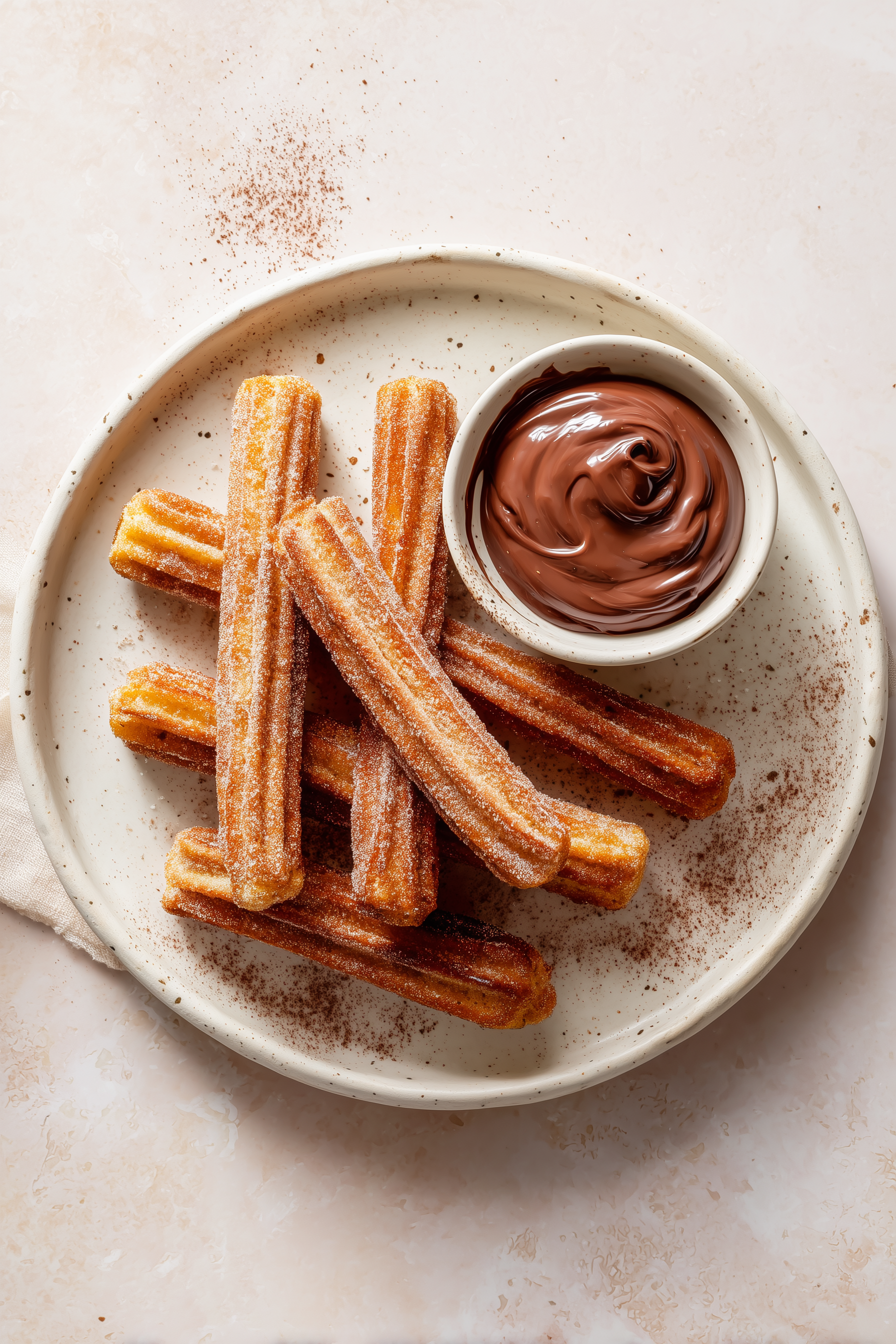
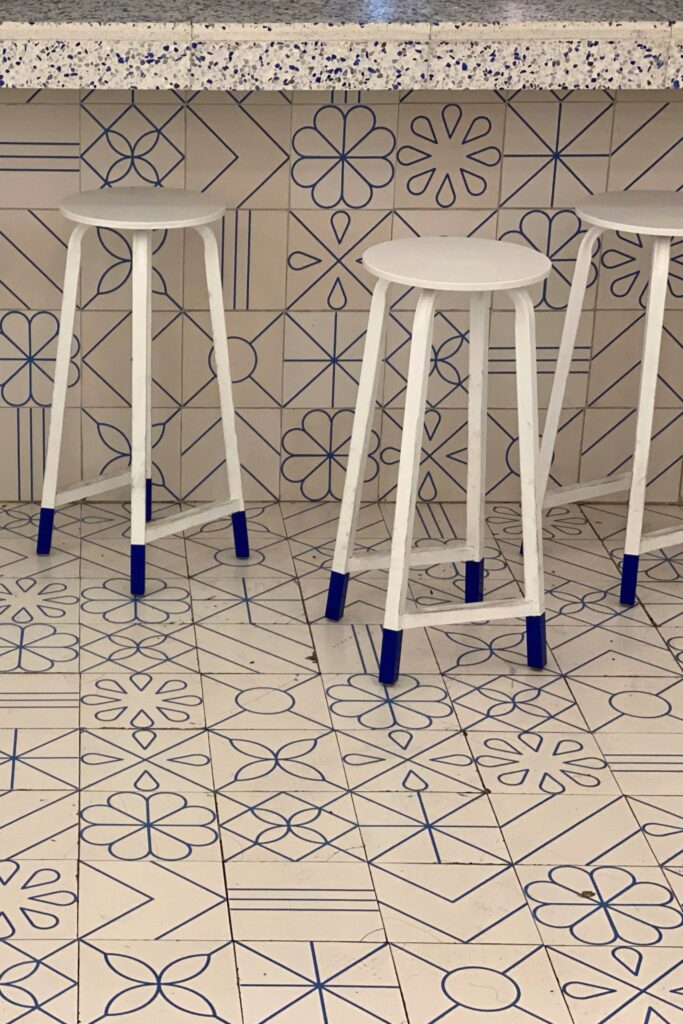
El Moro Churrería is the sweet spot (literally and aesthetically). Come for the design crush, stay for the sugar rush.
Hotel | Address: C. de Venustiano Carranza 69, Centro Histórico de la Cdad. de México, Centro, Cuauhtémoc, 06000 Ciudad de México, CDMX, Mexico
A Threshold Worth Crossing – Umbral, A Curio Collection Hotel by Hilton, Mexico City:
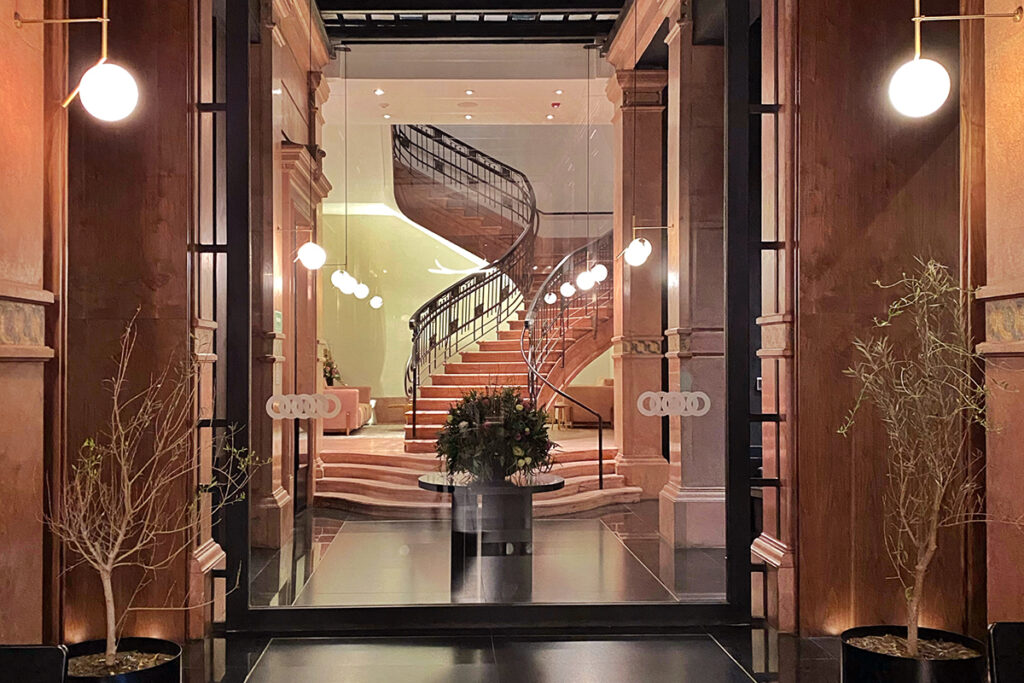
Right off the buzzing Zócalo square, you’ll find one of Mexico City’s best-kept design secrets—Hotel Umbral, part of Hilton’s Curio Collection. But don’t expect your typical corporate vibe. This place isn’t going for glossy or grand. It’s going for cinematic.
Step through the entry, and it’s like the city volume gets turned down. The space darkens, hushes, and shifts. You’ve officially crossed the threshold—literally. “Umbral” means threshold in Spanish, and this hotel doesn’t let you forget it. The lobby is noir-level moody: black marble, pink limestone, softly glowing globes, and a brass-laced ceiling.
The hotel dates back to the 19th century and was once an office block, then transformed with a steel skeleton in the 1920s (that gorgeous spiral staircase? She’s been here since 1924).
This atrium is drama—in the best, most architectural way. You walk out of your room, and it feels like you’ve stepped into the skeletal frame of an old noir film set. The glass-block catwalks stretch across the open core like translucent runways, catching light from the massive skylight above and casting checkerboard shadows onto the mosaic floor below. The wrought iron railings wrap around each floor with that perfect mix of elegance and edge. It’s quiet and echoey in that hushed, reverent way—like the building’s trying to tell you its secrets if you linger long enough.
The name Umbral means “threshold,” and this hotel doesn’t just nod to that concept—it builds an entire guest experience around it. From the moment you step off the buzzing streets of Centro Histórico and into the shadowy marble lobby, you’re crossing into something slower, softer, and more intentional. Architect Javier Sánchez calls it a “decompression chamber,” and that’s exactly what it feels like. The light dims. The noise fades. You exhale.
The design by JSA Architecture and Nomah leans in hard on contrast. Each guest room starts in shadow—an anteroom of black plaster and terrazzo—and then opens up to bright, light-drenched serenity. White drapes. Marble floors. Soft textures. A brass-framed portal separates the two like a scene change in a play. You feel it. And you kind of don’t want to leave.
There’s a rooftop pool and terrace with sweeping views of Centro, an on-site art gallery, and moments of shadow and light tucked in every corridor. It’s equal parts industrial edge and soft-spoken elegance.
If you’re the type who likes your hotels with brains, beauty, and just enough quiet mystery to keep it interesting—Umbral’s your spot. It doesn’t shout. It doesn’t try. And that’s exactly why it works.
You’ve Got Questions? Here are the Answers to the Hotel Umbral, Mexico City:
Can you book the Umbral Hotel for design events or photo shoots?
You could—and honestly, you should. With its cinematic staircases, soft lighting, and historic textures, it’s a total backdrop dream. The hotel’s open atrium with original glass-block floors and vintage iron railings looks straight out of a cinematic dream. Add in the moody lighting, vintage elevator with a gated door, and that dramatic brass-arched guestroom reveal? It’s basically begging for a photo shoot. Just check with the hotel directly for permissions and details.
What are some of Umbral Hotel’s most unique design features?
Let’s start with the vintage elevator, still working its gated magic. Then there’s the stunning glass block floors in the atrium—it’s almost like you’re walking on air. And that sculptural staircase. Gorgeous! Long corridors, shadowy corners, terrazzo stair treads—it’s history, but make it fashion.
Is Umbral Hotel good for a romantic getaway in Mexico City?
Moody lighting, luxe linens, rooftop cocktails, and that threshold portal bedroom reveal moment? Big yes. The vibe here is sexy without trying too hard—like if Wes Anderson and a modern art gallery had a very romantic weekend in CDMX.
What’s with the dark entry room in the Hotel Umbral’s guest suites?
That’s the anteroom—part of the whole “threshold” concept. You walk into a moody, minimalist space (think black walls, soft lighting), and then—bam—cross through a brass archway into a bright white bedroom. It’s dramatic. It’s sexy. It’s a vibe.

Want to Create Your Own Home Aesthetic?
If all of these stunning design destinations inside this Mexico City Aesthetic Travel Guide are making you want to refresh the look of your space, let’s fix that!
My Interior Design Starter Kit is your design wake-up call. It helps you figure out what your style actually is, how to assess your space (without panic), and how to pull it all together before you waste money on random stuff that doesn’t vibe.
Restaurant | Address: Pje. Allende 3, Centro Histórico de la Cdad. de México, Centro, Cuauhtémoc, 06010 Ciudad de México, CDMX, Mexico
Stone, Smoke, and Mezcal: Inside Limosneros Restaurant
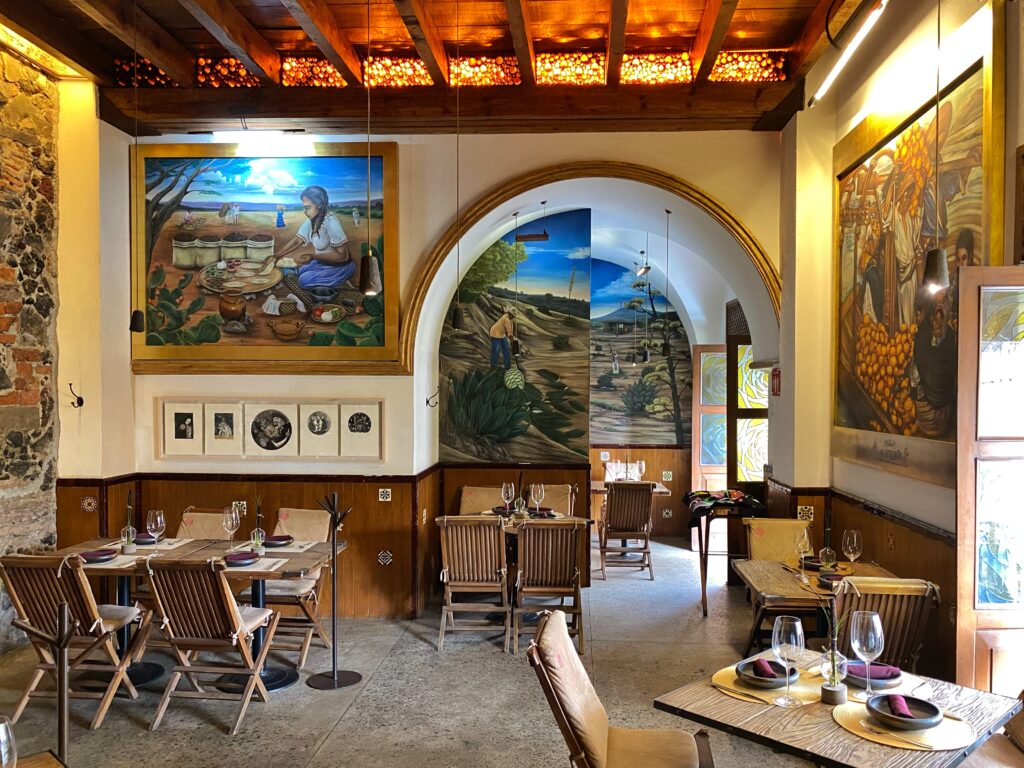

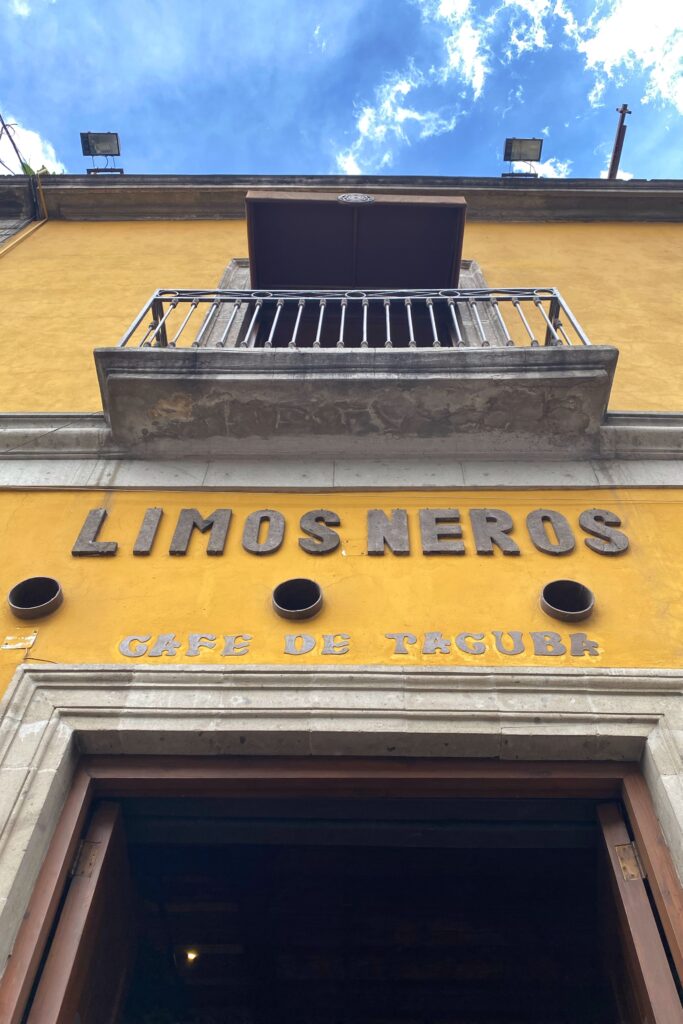
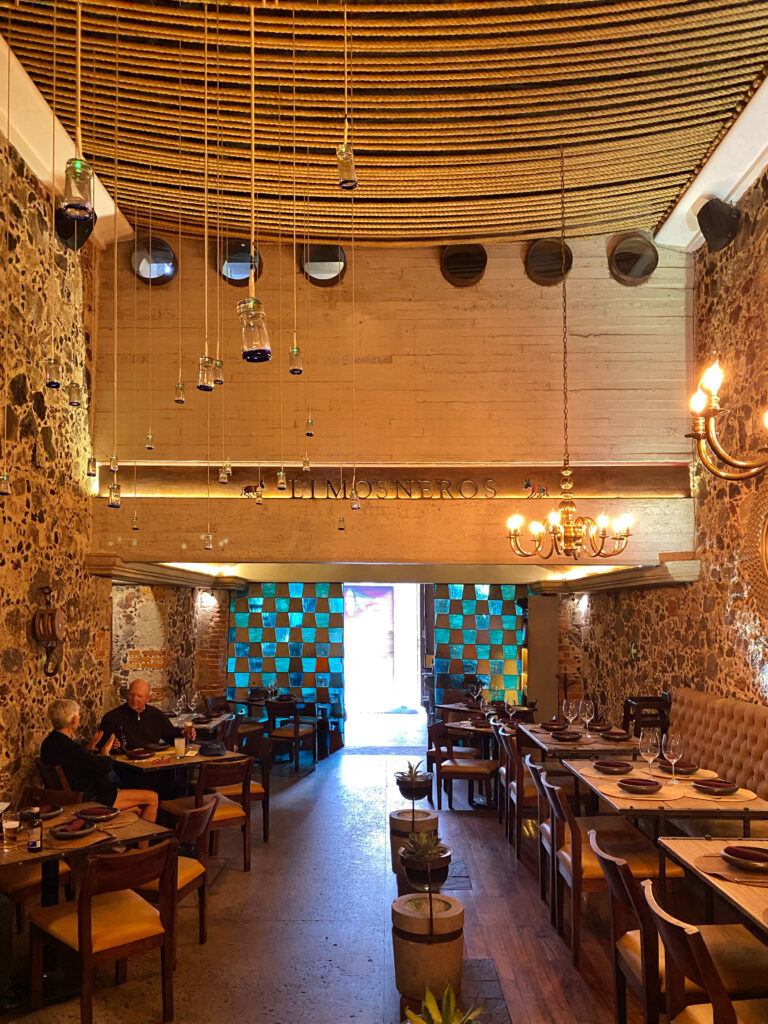
Tucked deep in the Centro Histórico, inside a building held together by centuries-old stone and stories, Limosneros isn’t just a restaurant—it’s a revelation. Yes, the food is exquisite. Yes, the mezcal flows like a smoky sonnet. But the real magic here is how heritage and design get woven into every detail. It’s moody, modern, and deeply rooted. A little ancestral, a little avant-garde.
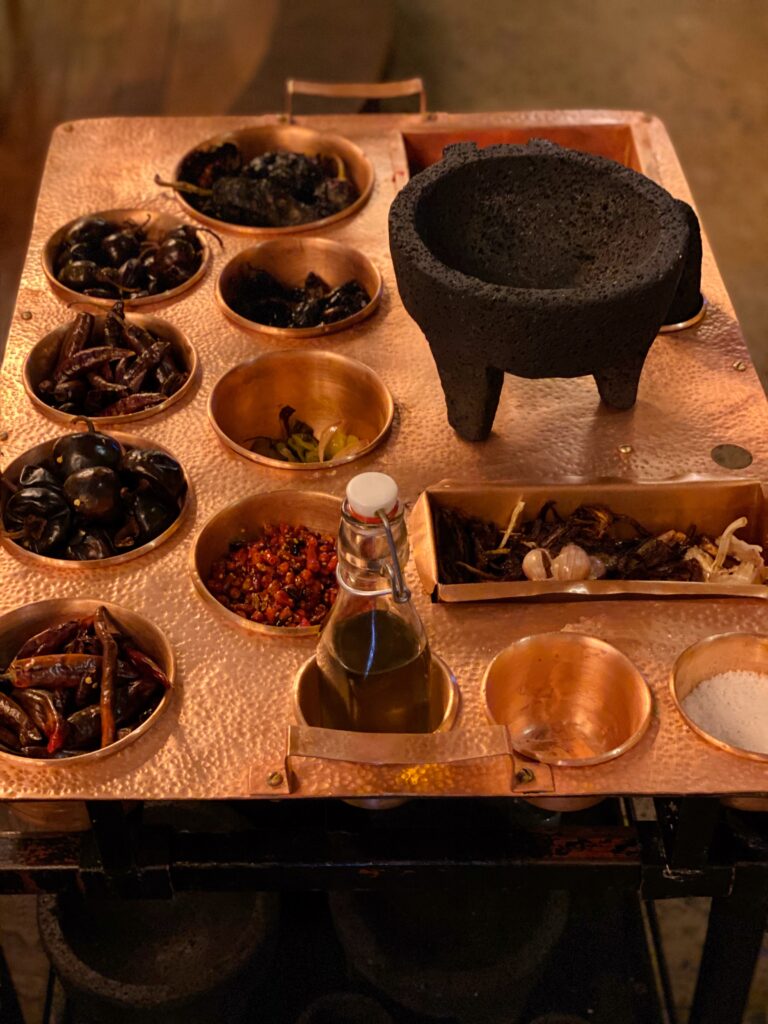
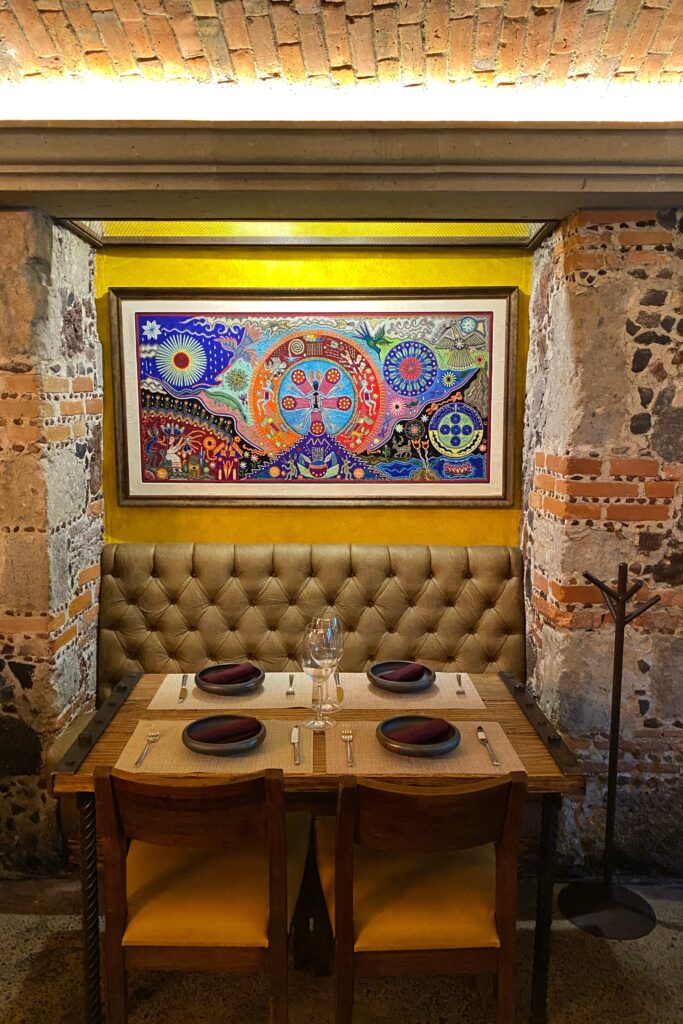
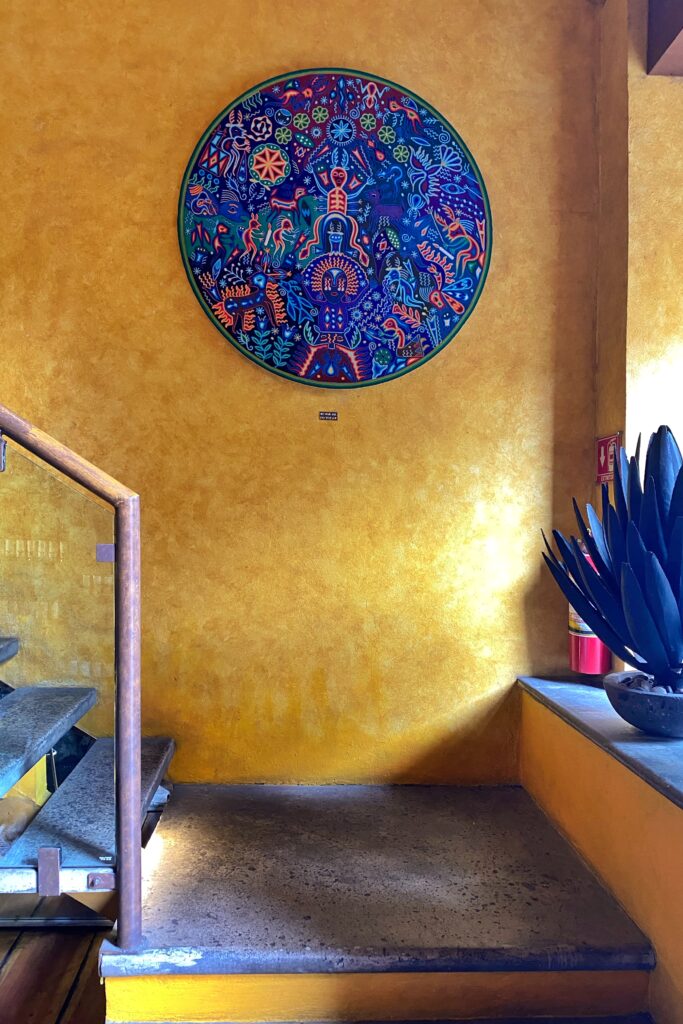
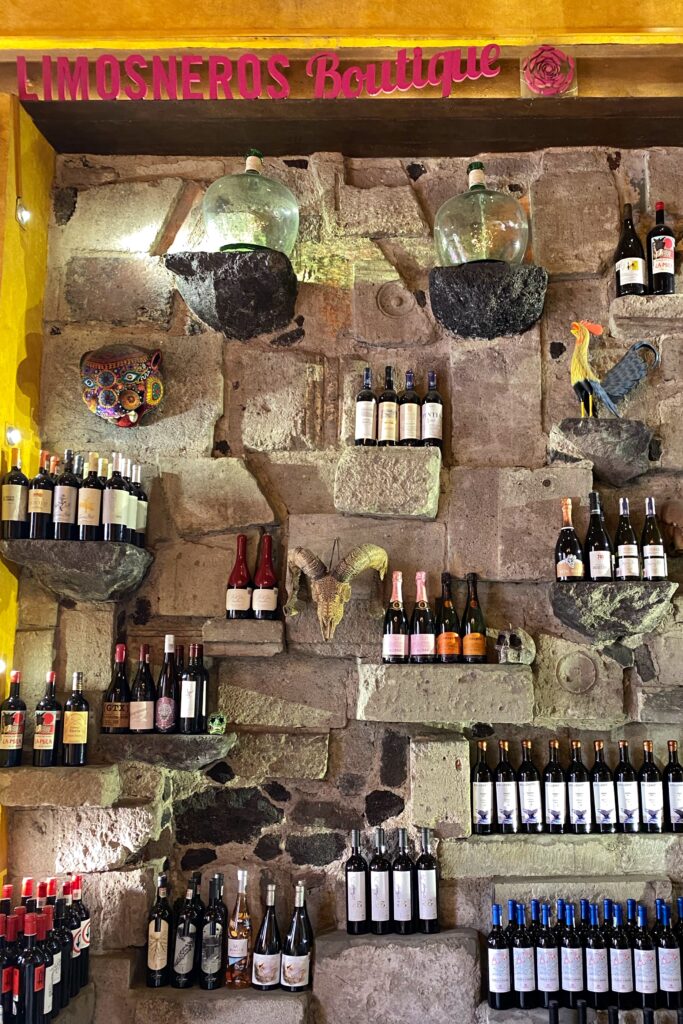
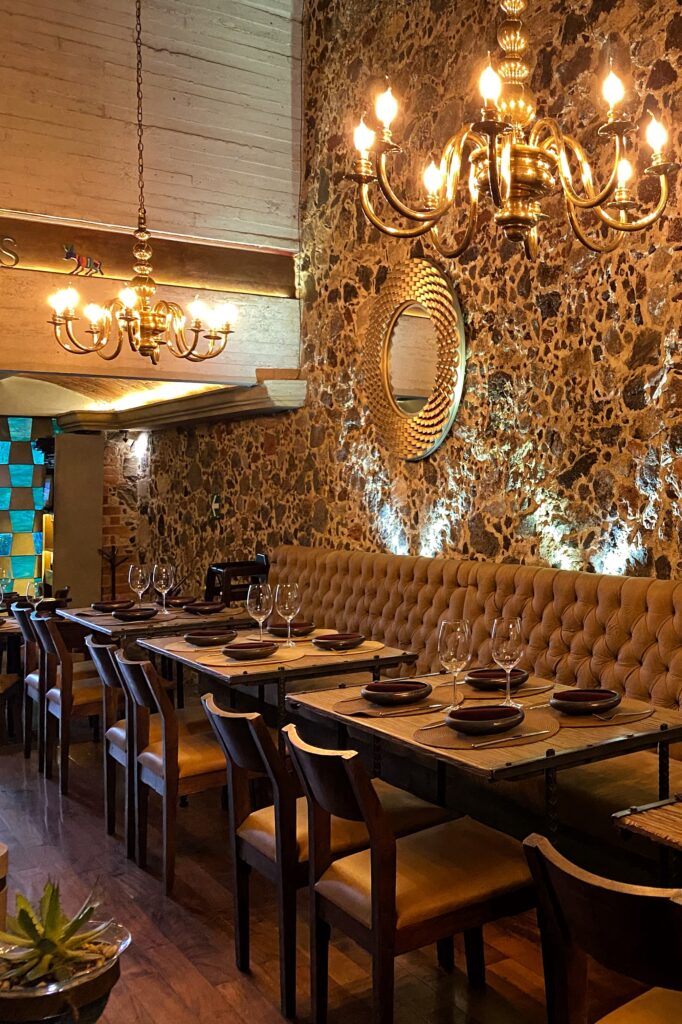
The space itself? A design crush. Think volcanic rock walls, candlelit chandeliers, thick rope ceilings, and soft leather banquettes set below artful mezcal urns suspended from chains. There’s nothing minimal here—it’s all intentional maximalism with texture, soul, and swagger. Owner and designer Juan Pablo Ballesteros took the colonial bones of this building and built something richly layered on top: pendant lights made from volcanic mortars, Indigenous art tucked into limestone crevices, and the kind of lighting that makes even your mezcal look sexy.
And about that name—Limosneros means “beggar.” Which is ironic, because this is no humble hole-in-the-wall. But the name isn’t about lack—it’s about legacy. The stones used to build the space were once church donations, offered by the public. In a way, the building was born of offerings. And now, it gives them back—one tasting menu, one mezcal pour at a time.
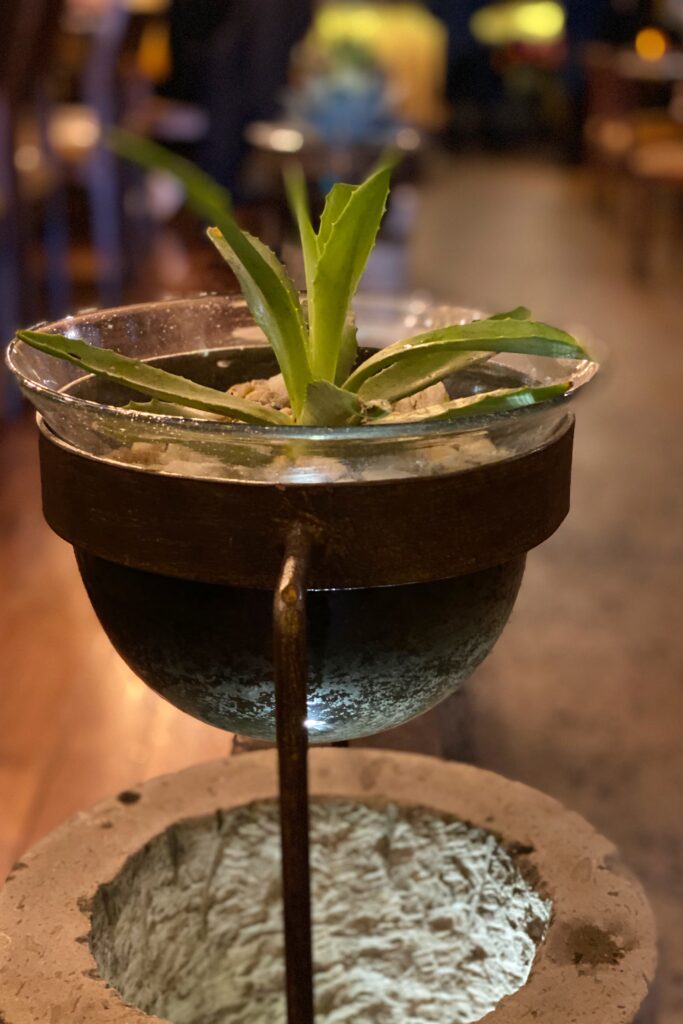
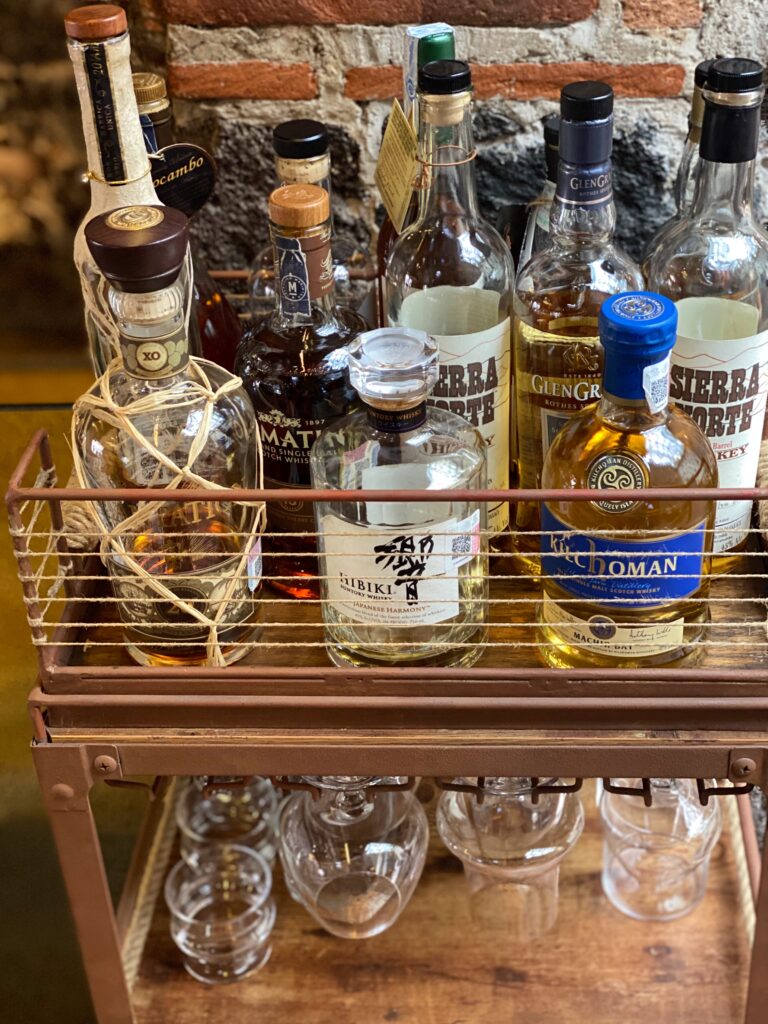
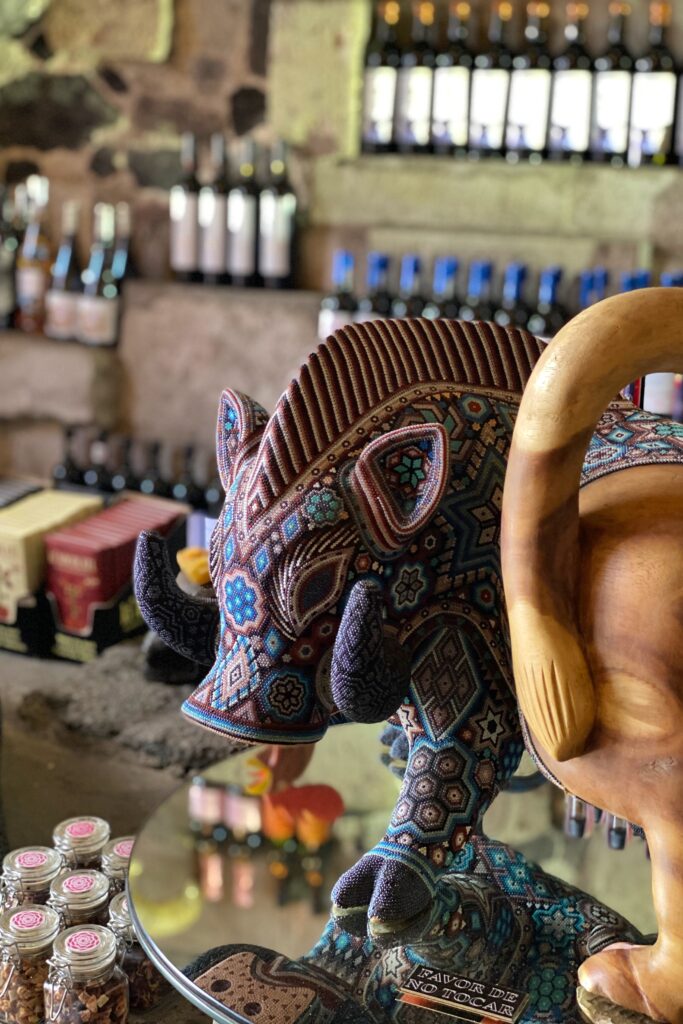
The owner, Juan Pablo Ballesteros, comes from Mexico City food royalty (his family opened Café de Tacuba back in 1912), but this is no legacy coattails situation. Limosneros is his vision, start to finish—and you can feel it. It’s layered, grounded, and a little rebellious. And about that name—Limosneros means “beggar.” Which is ironic, because this is no humble hole-in-the-wall. But the name isn’t about lack—it’s about legacy. Because the church that originally built the space asked for donations—limosnas—in the form of stone, which became the bones of the building. So yeah, there’s meaning in the masonry.
The food is Mexico’s past and future on a plate. From corn three ways to escamoles (yes, ant eggs—yes, you should try them – I did!), each dish feels bold and poetic. Their mezcal program is just as intentional: over 30 artisanal bottles and bartenders who know. You could go in for a pour of tobalá and end up in a full-blown flight of tobaziche, madrecuixe, and arroqueño. It’s that kind of place.
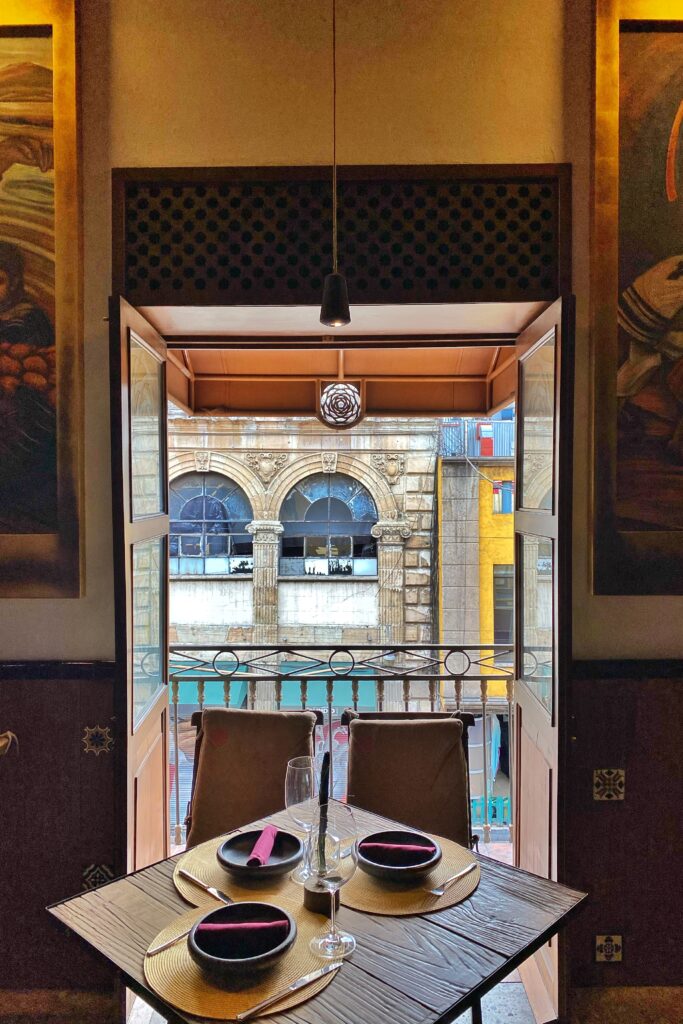
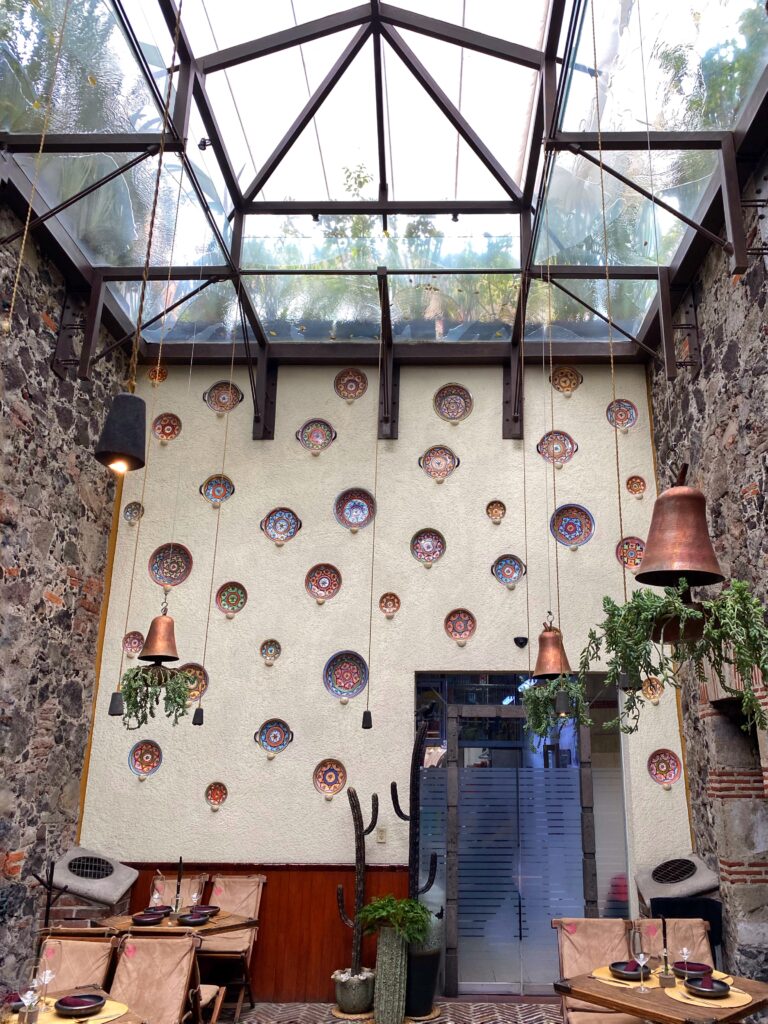
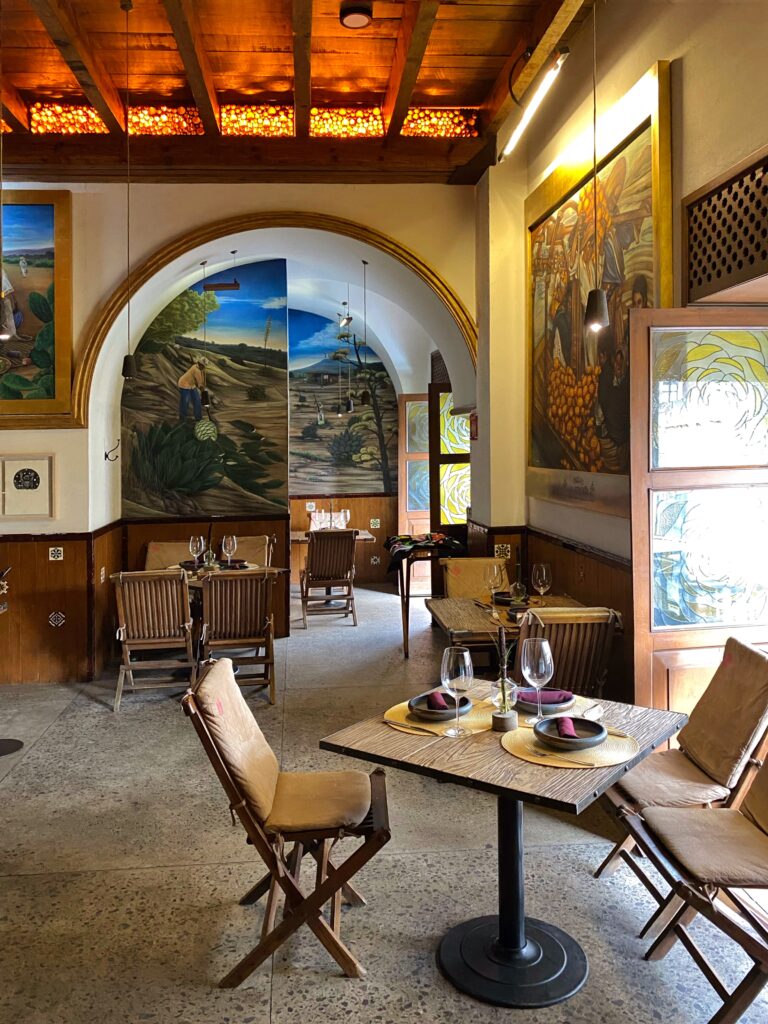
Pro tip? Go upstairs. Wander. Take in the all-glass ceiling, the hanging lights, the layers of material history. There’s something almost spiritual about the second floor—like the restaurant wanted you to see what it was built on, and what it’s building toward.
FAQ’s About Limosneros Restaurant, Mexico City
Q: What makes Limosneros one of the most unique restaurants in Mexico City?
A: It’s not just the food (which is incredible)—it’s the entire experience. Housed in a centuries-old building in the Centro Histórico, Limosneros blends pre-Hispanic flavors with modern artistry. The volcanic stone walls, indigenous artwork, and custom lighting made from molcajetes set the tone for a dining experience that’s a treat for your eyes and your tummy!
Q: What should I order at Limosneros?
A: If you’re adventurous: go for the escamoles (#SpoilerAlert: yes, ant eggs—I went for it…no regrets). If you’re into rich flavor: try the duck mole. And if mezcal is your love language, the curated tasting flights will not disappoint. Don’t skip the house-made tortillas—they’re a revelation.
Q: Can you go to Limosneros just for the mezcal?
A: You could—and honestly, you should. Limosneros boasts one of the most thoughtful mezcal collections in the city, with pours you’ve probably never heard of but won’t forget. The suspended glass urns at the bar? Full of mezcal. It’s a vibe.
Q: Is there more to see at Limosneros beyond the dining room?
Absolutely—go upstairs. The restrooms are on the mezzanine (and there are some fun peekaboo windows looking down into the dining room, below). But the can’t-miss spot is the second floor. It’s a design lover’s dream, complete with a soaring glass ceiling that floods the space with light and highlights the historic architecture. From volcanic stone walls to repurposed molcajete pendant lights, every detail is intentional. Wander, linger, and take it all in—this is not your average restaurant. My advice: sip, stay, and explore!
Restaurant | Address: Av. de Las Fuentes 180 – B, Jardines del Pedregal, Álvaro Obregón, 01900 Ciudad de México, CDMX, Mexico
Tetetlán Restaurant: Lava Rocks & Cactus Cocktails: Inside Mexico City’s Most Stunning Restaurant

If I could bottle the feeling of falling in love with Mexico City, it would smell like Tetetlán—smoky tortillas, incense, sun-warmed stone. And it would feel like walking through this place slowly, discovering corners you didn’t expect. There’s no other way to describe a space where you’re literally walking on glass floors suspended above lava rock, while sunlight filters through paper garlands fluttering overhead.
Tetetlán is that rare spot where design, food, and calm living collide — and you immediately want to move in. Nestled in Jardines del Pedregal, in what used to be stables (yes, really: old horse stables of a Luis Barragán–adjacent house), the place has been reborn as something beautiful.
It’s the kind of place that reveals itself in layers. You come for lunch—and then stay for hours. After the meal, you might wander into the upstairs café, which feels like your dream living room curated by someone who only drinks mezcal and reads beautiful books. There’s a library, a vinyl listening nook, and a design retail shop where I somehow walked out with a carved skull shot glass and zero regrets.
Food here honors Mexico’s roots without feeling dusty or old. There’s esquites, huitlacoche, comal‑tortillas, and plates where every ingredient seems to be speaking. Portions are generous, flavors bold, but tempered with precision. Drinks lean honest — good mezcal, bright local ingredients (hello, cactus), it’s something unexpected and memorable.
Tetetlán isn’t just a spot to eat. It’s a space to be in—to get lost, to reset, to remember why we love cities that still know how to surprise us.
Whether you come for the food, the architecture, or the excuse to say, “I had lunch on top of a lava field in a Barragán building,” Tetetlán hits. If you only have one long, lingering afternoon in CDMX, this is where you spend it.
All About Tetetlán: A’s to your Q’s
What makes Tetetlán’s architecture and design unique (glass floors, volcanic rock, etc.)?
Tetetlán is one of those places you stop breathing at before you even sit. The building has glass floors that let you peer straight down to the volcanic rock beneath (yes, literal lava stone vibes). There’s a mix of Barragán-influenced architecture, multi-levels to explore, skylights pouring in light, and beautifully curated, unexpected furniture throughout. Basically, it’s a museum you can eat in.
Is Tetetlán worth a visit even if you’re staying in central CDMX?
100% Yes. It’s a bit out, but that’s the point. You won’t find dozens of tourists here—all the drama and beauty feel fresh and exclusive. The ride is part of the adventure. And once you’re inside, the architecture, the light, the ambiance—it’s all so magnetic that it’s worth carving out the time.
Is Tetetlán just a restaurant—or more than that?
Oh, it’s so much more. Tetetlán is part concept café, part cultural center, part design destination. Yes, there’s a gorgeous farm-to-table restaurant—but also a curated retail shop, a serene café-library hybrid, a sound therapy room, and art-filled corners that make you want to move in. It’s the kind of place you wander, linger, and maybe “accidentally” spend three hours. Come hungry, but stay curious.
What’s the story behind Tetetlán’s design and glass floors?
Tetetlán isn’t just designed—it’s layered. Housed in what was once the horse stables of Luis Barragán’s Casa Pedregal, the space is now a stunning mix of glass, volcanic rock, and architectural drama. The floors are literally transparent—glass panels let you peer down to the ancient lava rock foundation below (hello, Instagram moment). It’s a stunning intersection of nature, design, and history—and yes, you’ll absolutely want to walk around and soak it all in. It’s one of the most unique restaurant interiors in Mexico City, and yes, it’s 100% worth the visit. (Pro tip: be sure to wear some cute shoes for your glass floor photo-op!)
What are the signature dishes at Tetetlán?
Tetetlán’s menu leans creative and local — a few favorites: the wood‑oven roasted fish, seasonal vegetables with volcanic salt, and their mezcal‑infused dessert that’s subtle but unforgettable. They’ve got some great juices (I had a cactus one when I was there – delish and super healthy). Always check what’s fresh, because some of the best dishes rotate with the market. And don’t skip a carajillo (or two) afterward — they do it right.
Hotel | 297 Avenue, Av. P.º de la Reforma, Cuauhtémoc, 06500 Ciudad de México, CDMX, Mexico
Sofitel Mexico City Reforma: Where French Chic Gets a Mexican Remix

I walked in expecting elegant chandeliers and polite pastel walls. Instead, I got French sophistication tangled beautifully with Mexican grit. Sofitel Reforma doesn’t do vanilla. It does geometry, marble, artful wood tones, and that high-rise energy with a soul.
The lobby pulls you up via a sculptural staircase—not just stairs, but something you’ll pause on, snap a pic on, and text your group chat about. Marble floors, crisp lines, soft furniture touches (hello Ligne Roset), and colors that whisper “calm” but still feel like a Paris café after an agave infusion. There are views everywhere: floor‑to‑ceiling windows that frame the Reforma skyline, the Angel de la Independencia, and sunsets that make you think you somehow leveled up.
Tucked into the 13th floor of Sofitel, Bajel is the kind of restaurant that nails the atmosphere and the food.
The space is stunning: moody black walls, warm lighting, and an open kitchen that feels like a chef’s theater. You’re close enough to catch the detail, but not so close it feels performative. The chairs are smooth wood and caramel-toned leather—like modernist thrones. And the view? Floor-to-ceiling windows make the whole city your dinner companion. The food pulls from deep Mexican roots, with modern technique and just enough French influence to keep it interesting.
The rooms are playing that contrast game too. Textured walls, wood paneling, marble finishes—it’s all mixed so smartly you almost don’t notice until you catch yourself adjusting your posture in front of the mirror. Amenities that feel indulgent—not extra: L’Occitane soaps, misters, big windows, clean layouts, and a color palette that lets your Instagram photos breathe.
Then there’s the rooftop—Cityzen—my favorite lookout point in the hotel. Tall cocktails, bold lights, music that’s serious but doesn’t make you leave right away. Also, food that knows how to mix Mexican spice with French refinement (duck confit, ceviche, dishes that could be at a gallery opening or supper club—your choice).
If you want a stay that feels good in your bones, where each space is whisper‑designed with intention, Sofitel Reforma is up there. Luxe without being stiff. Chic without being distant. Exactly what a design lover coming to CDMX wants.
Mexico City Delivers
Sure, it’s known for tacos, traffic, and tiled floors that beg to be photographed—but you came for the vibe. And from bold flavors to moody interiors, this city showed up and showed off.
You braved the cobblestones in cute shoes, tried every carajillo on the menu (no regrets), and hopefully picked up a few ideas to steal for your own space.


And don’t forget to download your free Mexico Aesthetic Travel Guide before you go, so you don’t miss a thing!
Want to keep the aesthetic vibes going?
Whether you’re planning your next trip or just love peeking inside the most stylish spaces around the world (hi, same), don’t miss my Nashville and New York Aesthetic Travel Guides. More style. More sips.
Vámonos. Again!
